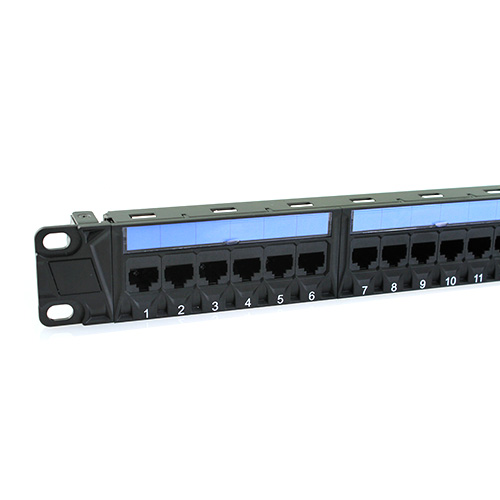
INFORMATION IS EVERYTHING.
In business, information is everything. And if data is the lifeblood of commerce, then the data center is the heart that keeps things moving. If your data center takes a dive, everything else comes to a screeching halt. You risk critical information loss, dissatisfied customers, expensive downtime and equipment replacement. The solution? Prevent data center trouble from the very beginning.
In addition to properly monitoring and maintaining server equipment, data center disaster prevention relies on an IT staff's adherence to a few cardinal best practices. It's a simple plan: get your team dedicated to upholding some basic server room ground rules and watch the frequency of incidents and malfunctions steadily drop. Here are 5 first-string best practices to kick off your data center prevention plan.
1. CREATE (AND FOLLOW) SET PROCEDURES
Procedure may be boring, but there's nothing like it for preventing malfunctions and mishaps — especially in data centers. Carefully document procedures for set up, breakdown, maintenance tasks and — if you live in an area prone to earthquakes, hurricanes, floods, or tornados — disaster recovery. Having set procedures for all aspects of data center operation ensures that no matter who works on a given day, how much staff turnover you experience or how many people you have collaborating on a project, everyone will be on the same page. They should be able to pick up the ball and complete any task with as little confusion and delay as possible.
2. LABEL LIKE IT'S GOING OUT OF STYLE
When it comes to data centers, there's really no such thing as too many labels. When you're dealing with a seemingly countless numbers of servers, switches and patch cables, it's in your best interest to label each and every data port and component. Taking a little extra time to label at the get-go can lead to exponential time savings in the long run — maintenance and troubleshooting take a fraction of the time when personnel can trace cables and ports at a glance, instead of using the frustrating trial-and-error method.
For patch panels and switches, use hard-wearing thermal transfer labels that can take the heat of constantly-running equipment. On cables, try sleeve-style heat shrink labels, which won't peel or drop off once shrunk into place.
3. BLACKLIST CONTAMINANTS, INCLUDING FOOD AND DRINK
Contaminants like dust, small fibers, liquids and food particles can all wreak havoc on computer equipment. It is critical that they're left where they belong: outside the data center. Strictly enforce a "no food, no drink" policy among employees. Make it easier to remember (and abide by) this rule by placing a highly visible sign and convenient trash can outside the data center's entrance.
Prevent staff from tracking in dust by having them wipe their feet on doormats. You can also mandate they slip anti-static covers over their shoes before entering. Further cut down on air-circulated particulate by keeping corrugated cardboard boxes well away from critical equipment. Boxes are known for shedding fibers that can be easily pulled into intake fans.
4. CRACK DOWN ON UNAUTHORIZED ACCESS
It is important to limit the potential of security breaches and other damages. Create a facility-wide policy requiring all visitors to sign in and out. Qualified personnel should always escort non-employees. Install card, biometric or code-based access-control systems in critical areas, which will ensure that only authorized employees interact with equipment. These systems can provide you with logs of the times at which any given employee accesses a particular room or system.
5. ACCIDENT-PROOF YOUR EMERGENCY BUTTONS
Emergency Power Off (EPO) switches are great things to have when unexpected emergencies strike. Significant problems arise if these are pushed at any other time. It can result in complete loss of power and hours of downtime, creating multiple crises for your business, clients and staff. Clearly label (in more than one language, if necessary) EPOs and install protective covers over emergency controls to prevent accidental pushes of these switches.
Shop at CableOrganizer® today for IT, telecom and datacom products to maintain your data center best practices.


